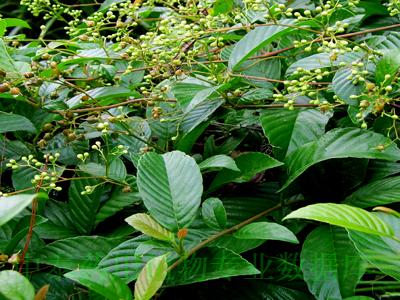| [English Name] | Asian Tetacera Root or Leaf | |
| [Chinese Name] | 锡叶藤 | |
| [Pinying Name] | Xiyeteng | |
| [Latin Name] | Radix seu Folium Tetracerae Asiaticae | |
| [Genera] | Dilleniaceae | |
| [Efficacy] | Antipyretic drug | |
| [Pictures] | Plant picture | Drug picture |

|
|
|
| [Alias] | ||
| [Source] | The root, stem and leaf of Tetracera asiatica (Lour.)Hoogl. (family: Dilleniaceae). | |
| [Plant morphology] | A perennial evergreen woody climber. It is branchy; branches are coarse, the young ones are haired, the old ones are hairless. Leaves are simple and grow alternately; the petiole is much strigose (namely with much stiff, closely appressed hair); the blade is leathery, extremely rough, long-rounded, elliptical or long-rounded obovate, 4-14cm long, 2-5cm broad, its apex is blunt or somewhat pointed, its base is broadly cuniform or nearly rounded and generally inequilateral | |
| [Distribution] | ||
| [Gathering and processing] | ||
| [Characteristics] | ||
| [Ecology] | Growth in low altitude mountain, woodland and bush. | |
| [Chemical composition] | The aerial part contains izalpinin, izalpinin-3-methyl ether, kaempferol-4',7-dimethyl ether, wogonin, wogonin7-O-β-D-glucuronate methyl ester, wogonin 7-O-β-D-glucuonide, dihydrowogonin, betulinic acid,β-sitosterol, daucosterol, stearic acid [1]. | |
| [Pharmacological activities] | ||
| [Clinical trial] | ||
| [Properties] | ||
| [Medical and other Uses] | ||
| [Dosage] | ||
| [Cautions] | ||
| [Traditional usage] |
1. Red or white dysentery (or heat-dampness dysentery) 2. Diarrhea 3. Hysteroptosis |
|
| [Toxicological studies] | ||
| [Pharmaceutical preparations] | ||
| [References] |
Chemical composition: |
|